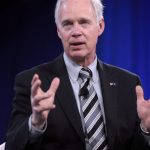From DeHart v. Tofte, decided Thursday by the Oregon Court of Appeals (Judges Douglas Tookey, Jacqueline Kamins, and Erika Hadlock):
In this case involving claims brought under Oregon’s recently enacted “anti-doxing” statute, ORS 30.835, three defendants appeal a limited judgment denying their special motions to strike under Oregon’s anti-SLAPP statute, ORS 31.150.
Each of the three plaintiffs in this case [Brown, DeHart, and Shannon] is an elected public official—namely, an elected director on the Newberg School Board (the School Board). Each plaintiff voted on a motion directing the superintendent of Newberg schools to, among other things, “remove all Black Lives Matter (aka BLM) signs, flags, and placards, apparel, buttons, and all other modes of display, and all instances of the symbol known as the Pride Flag from District facilities immediately” (the Ban).
Following the Ban, defendants [Schwanz, Tofte, and Brookfield]—each of whom has a child or children attending Newberg public schools, and each of whom disagreed with the Ban—posted information about plaintiffs’ employers in a private Facebook group called “Newberg Equity in Education” (NEEd).
Plaintiffs sued under the anti-doxing statute, which allows people to sue “for improper disclosure of private information” based on a showing that:
[a] The defendant, with the intent to stalk, harass or injure the plaintiff, knowingly caused personal information to be disclosed;
[b] The defendant knew or reasonably should have known that the plaintiff did not consent to the disclosure;
[c] The plaintiff is stalked [as defined in Oregon criminal and civil stalking statutes], harassed or [bodily] injured by the disclosure; and
[d] A reasonable person would be stalked, harassed or injured by the disclosure….
‘Harass’ means to subject another to severe emotional distress such that the individual experiences anxiety, fear, torment or apprehension that may or may not result in a physical manifestation of severe emotional distress or a mental health diagnosis and is protracted rather than merely trivial or transitory.
‘Personal information’ means:
[A] The plaintiff’s home address, personal electronic mail address, personal phone number or Social Security number;
[B] Contact information for the plaintiff’s employer;
[C] Contact information for a family member of the plaintiff;
[D] Photographs of the plaintiff’s children; or
[E] Identification of the school that the plaintiff’s children attend.
But the court of appeals (reversing the trial court) concluded that the case should have been thrown out. It first remarked (in determining whether to apply Oregon’s anti-SLAPP statute, which provides for special procedural protections) that the speech was “in furtherance of the exercise of the constitutional right of free speech in connection with a public issue or issue of public interest”:.
[T]he First Amendment “does not preclude * * * threatening social ostracism or vilification to advocate a political position.” Planned Parenthood of Columbia/Willamette, Inc. v. Am. Coal. of Life Activists (9th Cir 2002). Nor does it preclude speech that “embarrasses” or “coerces” {“through social pressure and the ‘threat’ of social ostracism”} another into certain action. N.A.A.C.P. v. Claiborne Hardware Co. (1982).
Here, … Brookfield posted the phone number for Shannon’s employer, Selectron Technologies, and Tofte posted the website for DeHart’s employer, Lam Research. Brookfield posted the phone number of Selectron Technologies so people could engage in conduct likely protected by the First Amendment—specifically, expressing “their concerns about [Shannon’s] demonstrated behavior.” And Tofte posted information concerning DeHart’s employment in the context of a proposed boycott of DeHart’s employer, and she encouraged members of the NEEd group to engage in conduct likely protected by the First Amendment—namely, communicating with DeHart himself….
[W]e need not decide whether Tofte’s and Brookfield’s conduct itself was protected by the First Amendment. We conclude, however, that that conduct was “in furtherance of the exercise of the * * * constitutional right of free speech” under Oregon’s anti-SLAPP statute.
Second, regarding whether each defendant’s conduct was in “connection with a public issue or an issue of public interest,” bearing in mind that we “liberally” construe the anti-SLAPP statute “in favor of the exercise of the rights of expression” it protects, we conclude that it was.
Notably, both Shannon and DeHart were elected public officials who were in the public eye as a result of their stance on an issue that affected a large number of people…. Although the trial court did not see any “nexus” between the posting of DeHart’s employer’s website and Shannon’s employer’s phone number, on the one hand, and an issue of public interest, on the other, the posting of DeHart and Shannon’s employment information furthered lawful forms of civic engagement on that issue by members of the public—such as boycott—and informing DeHart’s and Shannon’s employers of the reason for the boycott. Cf. Brayshaw v. City of Tallahassee, Fla. (ND Fla 2010) (explaining that publication of the home addresses and phone numbers of police officers was “linked to the issue of police accountability,” which is an issue of “legitimate public interest,” because it aids in “achieving service of process, researching criminal history of officers, organizing lawful pickets, and other peaceful and lawful forms of civic involvement that publicize the issue”); Publius v. Boyer-Vine (ED Cal 2017) (noting “several cases demonstrate that the First Amendment protects the right to publish highly personal information of private individuals, such as the names of rape victims and juveniles involved in legal proceedings, when they relate to matters of public concern” and collecting cases).
We also think that the particular conduct giving rise to the cause of action in this case—posting “contact information” for plaintiff’s employers—cannot meaningfully be separated, under the first step of the anti-SLAPP statute, from the larger political conversation that was taking place in the NEEd Facebook group in response to an issue that had both drawn widespread media attention and had actual impacts on the lives of those attending and working in Newberg Public Schools….
[W]e are not making a normative judgment as to the societal acceptability and utility of posting information concerning the private employers of DeHart and Shannon online. But, as the United States Supreme Court has observed in a different but related context, the “inappropriate or controversial character of a statement is irrelevant to the question whether it deals with a matter of public concern.”
And the court concluded that the anti-doxxing statute didn’t cover defendants’ speech (which made it unnecessary for the court to determine whether defendants’ speech was protected by the First Amendment or by the Oregon Constitution):
[First,] it is evident from the definition of “harass” that not all emotional distress is sufficient to assert a cause of action under ORS 30.835; rather, the emotional distress must be “severe” in nature. Under our case law, a determination of whether emotional distress is “severe” requires consideration of its “duration and intensity.” …
Second, for a disclosure of “personal information” to be actionable, the disclosure must be of the sort that would cause a “reasonable” person severe emotional distress. The word “‘reasonable’ inherently requires consideration of the relevant circumstances, as nothing is ‘reasonable’ or ‘unreasonable’ in a vacuum.”
Third, relatedly, each of the plaintiffs in this case is a “public official,” not a “private individual.” Plaintiffs and defendants treat the fact that plaintiffs are public officials as a relevant circumstance in determining whether their “severe emotional distress” was “reasonable,” and we agree that it is a relevant circumstance. As the United States Supreme Court has observed, “[a]n individual who decides to seek governmental office must accept certain necessary consequences of that involvement in public affairs,” including that the individual “runs the risk of closer public scrutiny than might otherwise be the case,” and has relinquished some part of their “interest in the protection of [their] own good name.” For example, “[c]ommunications media are entitled to act on the assumption that public officials and public figures have voluntarily exposed themselves to increased risk of injury from defamatory falsehood concerning them,” but “[n]o such assumption is justified with respect to a private individual.”
Fourth, the statutory scheme indicates that the legislature did not contemplate that any “disclosure” of “personal information” of the type listed in ORS 30.835(1)(d) would cause a “reasonable person” to be “stalked, harassed or injured.” …
[In this case], the identity of each plaintiffs’ employer was information that each plaintiff had actively publicized, not information that any of the plaintiffs had sought to keep private: Plaintiff Shannon described his employment at Selectron Technologies on his School Board campaign website and his LinkedIn page; plaintiff DeHart included his employment with Lam Research on his LinkedIn page; and plaintiff Brown gave an interview to the Canby Herald in which he discussed both his employment as a tennis coach in Canby and his position on the School Board, and he put forth his work as a coach as a qualification for serving as a member of the School Board. We note that the purpose of professional networking websites such as LinkedIn, and the purpose of campaign websites, is to publicize information, not to keep such information private. And, generally speaking, it seems that statements are given to newspapers with the understanding that they will be published and read.
Moreover, the “personal information” that was published about each of plaintiffs’ employers was information readily publicly available based on the information plaintiffs themselves had promoted either on campaign websites, LinkedIn, or in the Canby Herald. We think the public and readily available nature of the “personal information” disclosed bears on the reasonable amount of “emotional distress” that a public official might feel upon having that information disclosed.
Additionally, the type of personal information disclosed coupled with other circumstances of the disclosures militate against a determination that any “severe emotional distress” felt by plaintiffs as a result of the disclosures was objectively reasonable. Regarding the nature of the personal information disclosed, in the case of Brown, it was the phone number and email address of his supervisor, the athletic director of Canby schools; in the case of DeHart, it was the website of his employer; and, in the case of Shannon, it was the phone number of his employer.
In no way do we minimize the emotional distress that might be felt as a result of such disclosures. But we note that ORS 30.835(1)(d) covers a variety of personal information, and we think that human experience teaches that the disclosures in this case might be less likely to cause a public official “severe emotional distress,” as that term is used in Oregon’s anti-doxing statute, ORS 30.835, than someone posting, for example, photographs of the public official’s children, the public official’s home address, and the names of the schools the public official’s children attend….
Other circumstances of the disclosures in this case also militate against a conclusion that any severe emotional distress felt by plaintiffs was reasonable. The disclosures of personal information here were made in a private Facebook group with around 649 members comprised mostly of parents of students in Newberg public schools.
There is no evidence in the record that any actual violence, vandalism, stalking, or criminal activity had been linked to that group; and indeed, although each plaintiff had developed a belief that their employer was contacted, there is no direct evidence that anyone actually contacted Brown’s, DeHart’s or Shannon’s employer as a result of Schwanz’s, Tofte’s, and Brookfield’s disclosures. In that regard, we note that the doxing of Brown, DeHart, and Shannon was less threatening than much of the doxing of public officials the Legislative Assembly heard about when enacting ORS 30.835. Cf. Audio Recording, House Committee on Judiciary, Subcommittee on Equitable Policing, HB 3047, Mar 10, 2021, at 43:12 (comments of Rep Bill Post) (describing being doxed on Twitter by a “national journalist” with 1.5 million followers, including the release of his Social Security number and a picture of his house); Audio Recording, House Committee on Judiciary, Subcommittee on Equitable Policing, HB 3047, Mar 1, 2021, at 51:00 (comments of Jon Isaacs) (describing doxing resulting in “attacks on the homes of elected officials” including an attempt to start a fire at one official’s home).
A few thoughts:
[1.] I think this is the right result: As the Court held in NAACP v. Claiborne Hardware and Organization for a Better Austin v. Keefe (1971), speech is constitutionally protected even if it discloses a person’s unpopular actions and calls for social pressure against him, including when it calls for social ostracism or economic boycott. That’s true even when it’s possible that a small subset of listeners will react not just with ostracism or boycott but with violence: Claiborne Hardware, for instance, held that the First Amendment protected the NAACP’s organizing a boycott of white-owned businesses and disclosing the names of black residents who didn’t comply with the boycott—even when there was evidence of actual violence against people who didn’t comply.
[2.] To be sure, publicizing some information such as Social Security numbers has next to no legitimate uses (though the matter is more complex as to home addresses). But information about people’s employers can indeed be important to public debates, precisely because the Court has recognized that ostracism and boycott is constitutionally protected. If listeners have the right to cut off business relations with my employer because of what I did, then speakers have the right to inform listeners of who my employer is.
[3.] But this suggests that the court’s analysis is quite limited, and offers very little protection to future speakers. For instance, it’s fortunate that there was no “actual violence, vandalism, stalking, or criminal activity [that] had been linked to” members of the Facebook group. But writers often won’t know whether some small fraction of their readers will indeed behave illegally (e.g., by sending a threatening e-mail, which would be “criminal activity”).
Likewise, the court notes that “there is no direct evidence that anyone actually contacted Brown’s, DeHart’s or Shannon’s employer as a result of Schwanz’s, Tofte’s, and Brookfield’s disclosures.” But some people certainly could have done so, and indeed the defendants seemed to intend that some of their readers do so. Certainly few future speakers could be at all confident that no-one would contact the employers of the people whom they are discussing, especially when the speakers are deliberately identifying the employers.
The court also stresses that plaintiffs were public officials. But the First Amendment protects criticism of private figures as well (especially on matters of public concern), including calls for ostracism and boycott: Claiborne Hardware and Organization for a Better Austin both involved speech about private figures.
And I’m not sure the court is right that such speech wouldn’t cause substantial emotional distress even to reasonable elected officials. Even if no-one reached out to the officials’ employers, it seems to me eminently reasonable for the officials to worry that someone would do so, and indeed that they’d lose their jobs as a result. Why wouldn’t that be enough to cause substantial emotional distress, even to someone who had voluntarily run for local office? I think people have a First Amendment right to produce such substantial emotional distress through speech calling for ostracism and boycott (of public officials and of others). But it seems to me odd for courts to conclude that such speech just doesn’t cause such substantial emotional distress to public officials.
[4.] Now I do hope that future courts will reach the right results even in other situations—when some listeners do act badly; when some listeners do contact the employers of the person being criticized (and indeed when those people end up losing their jobs); when the speech is about people who aren’t public officials; and when the speech does genuinely cause substantial emotional distress, including by the targets worrying that they’ll lose their jobs. And I do think that the opinion here is likely a step in the right direction, especially because of the analysis in the “exercise of the constitutional right of free speech in connection with a public issue” question. But I do think it’s only a modest step, and one that might unfortunately be read as pointing the way to wrong steps.
Athul K. Acharya, Kelly Simon, Shenoa Payne, Rian Peck, and ACLU Foundation of Oregon, represent defendants.
The post School Board Members Use “Anti-Doxing” Law to Sue Critics for Publicizing the Members’ Employers appeared first on Reason.com.






